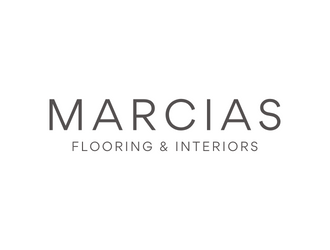How to Achieve a Soothing, Minimalist Interior - Flooring & Decor Options
When we think of a minimalist interior, we instantly imagine plain, bland and even boring home style interiors. The Minimalist movement has evolved however, from the basic style we once knew into something more personal.
In this article, we explore the main interior aspects that make up this understated yet refined approach to a home decor scheme. We also look at the best decor choices to achieve your own version of minimalism at home.
What is a Minimalist Interior?
From a design perspective, a minimalist aesthetic is about simplicity, polished lines and curves and allowing the select decor pieces to speak for themselves. It also uses light and shadow to enhance texture and colour creating a peaceful and restful ambience.
What are the Key Features of a Minimalist Scheme?
There are some elements of a minimalist home design that are fairly common-place although you don't have to stick to hard and fast rules to get this look by yourself. Use some of the following tips as a general guideline.
Neutral Palette

Colours such as White, Grey, Blue and Beige are popular choices for a minimal scheme. These shades come in so many variations which can be easily layered and blended to create texture and depth. Choose two neutral colours you like that can be used as a base tone with accents of the other, for example, an off-white and a deep tonal grey. When selecting flooring for your minimalist space, choose tones in Grey, natural Oak or flat colours like Black or White treated engineered wood.
Little or No Decorative Accessories

A minimalist interior is based on simplistic and laconic features which work in harmony together. Wall,floor and ceiling decor is kept to a minimum to add a feeling of space and fluidity. Avoid overly colourful art prints, ornate rugs or too many light fixtures and focus on sleek, functional items that have incredible shapes. Try to choose decorative accessories such as a vase, a plant or piece of artwork if it contributes something to the space in terms of it's form, colour or texture.
Mild or Limited Pattern

Fussy or overly bold patterns in fabrics, wallpapers etc distract from the unadorned and spacious vibe you are aiming to create. For variation, opt for different materials and textures instead for example, explore natural wood flooring options with subtle, interesting grain patterns which have a natural design of their own.


One Predominate Colour Throughout

Often there is one dominate colour within a minimalist scheme such as using various shades of one colour throughout the landscape of a room. Repeat the main colour of your walls in items such as fabrics, decorative items and flooring.

Sleek and Clean Curves & Lines

Minimalist furniture and fittings are the centre pieces of a minimalist room so select sofas, chairs and other fittings with curves and smooth lines. This celebrates the functionality of your space in all it's simplicity. Aim for sleek, high-end finishes in spaces such as Kitchens and Bathrooms where fixtures are the focal points.

Statement Decor Item(s)

It is not unusual to see a beautifully crafted mirror, coffee table or lamp within this type of interior. This is because the shapes and silhouettes of well-made, functional pieces contribute to the overall effect of the space and attract the eye. Again, minimalism doesn't need to be basic. Pick a stunning light fixture or interestingly shaped table that draws the eye to the workmanship and form of the item but make sure to keep these accents to a minimum.

Final Thoughts
A minimalist interior doesn't have to mean boring. By selecting key pieces that you love and using carefully chosen colours while keeping everything balanced with minimal accessories, you can create your own haven of calming minimalism.


